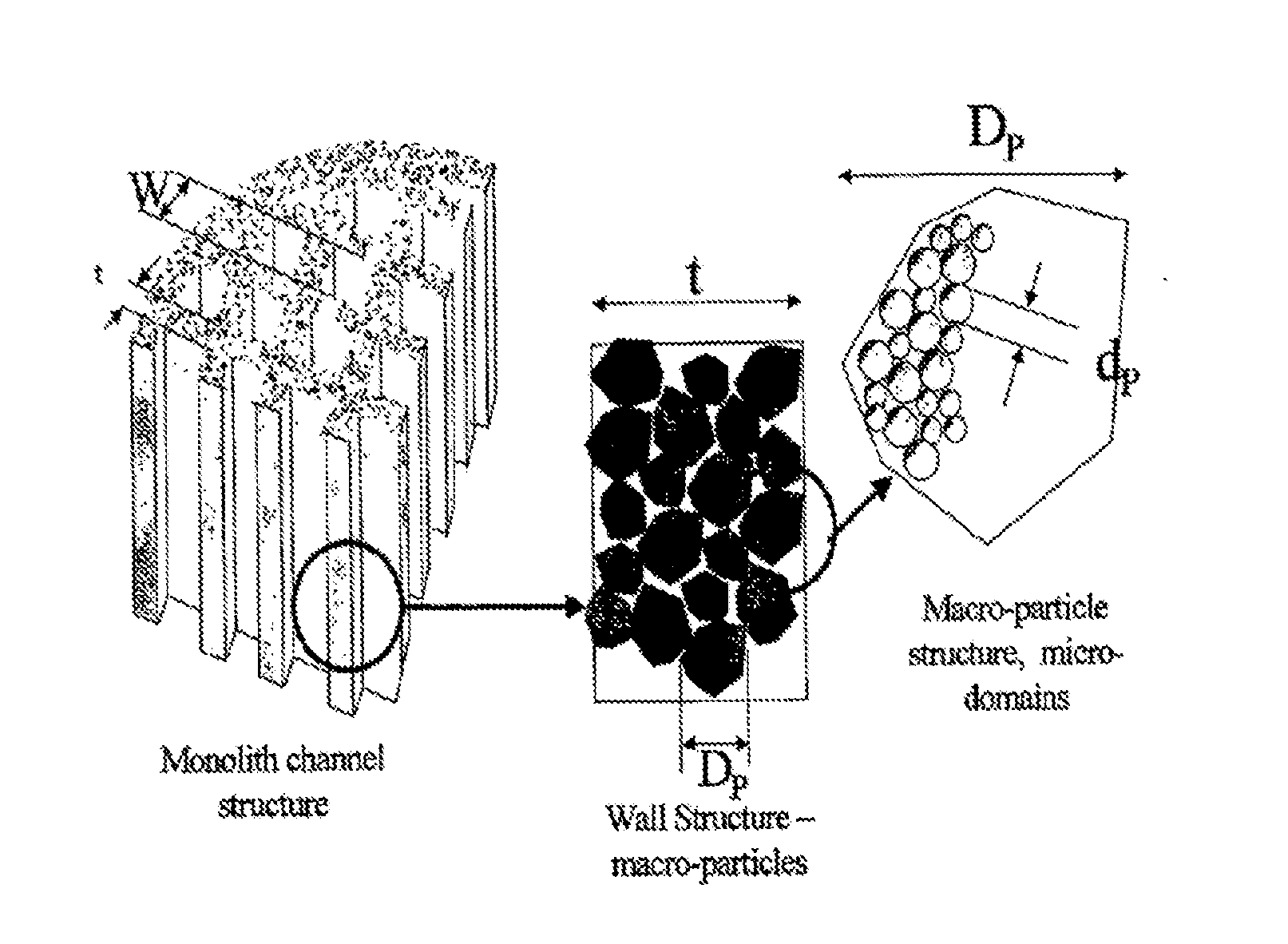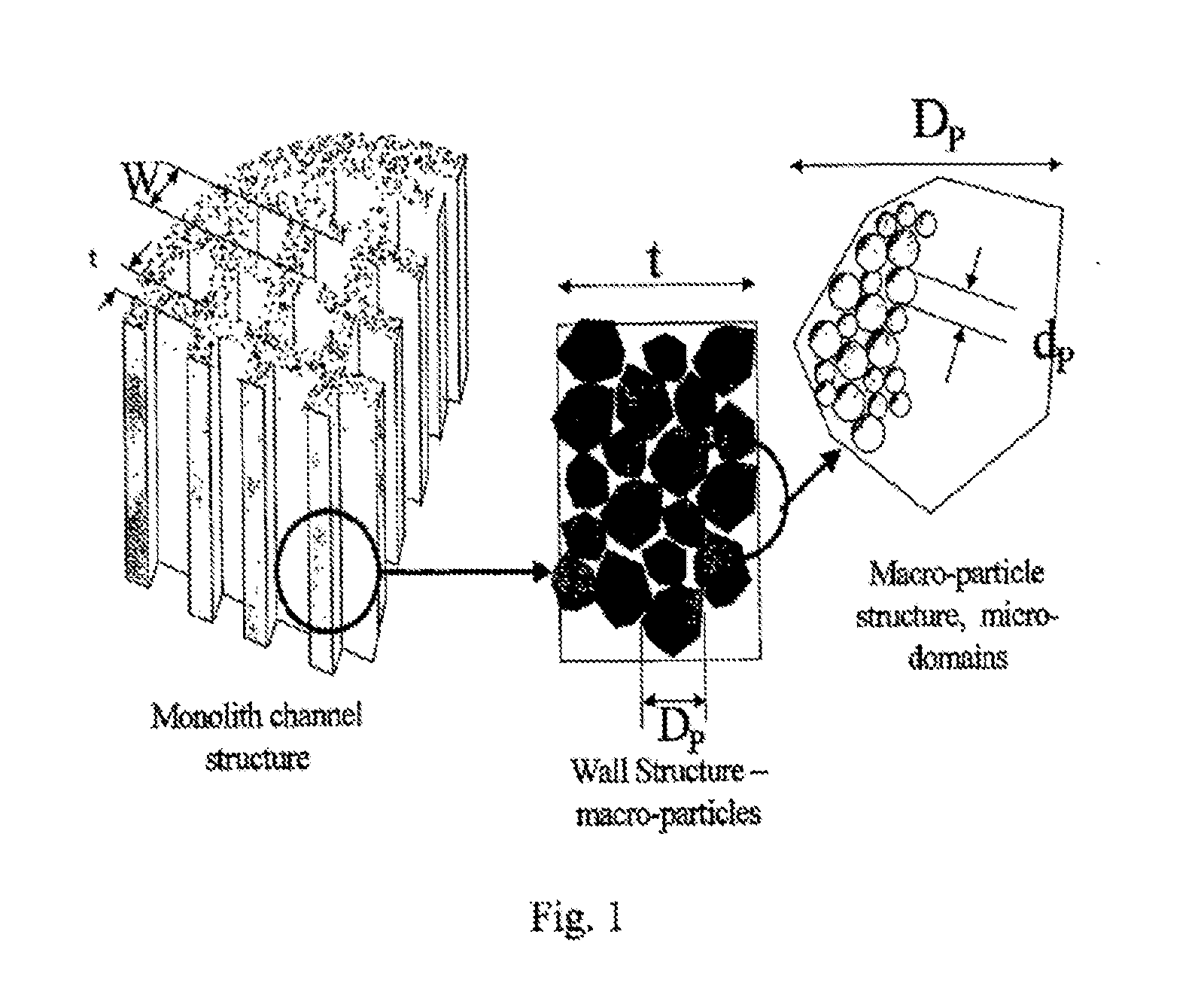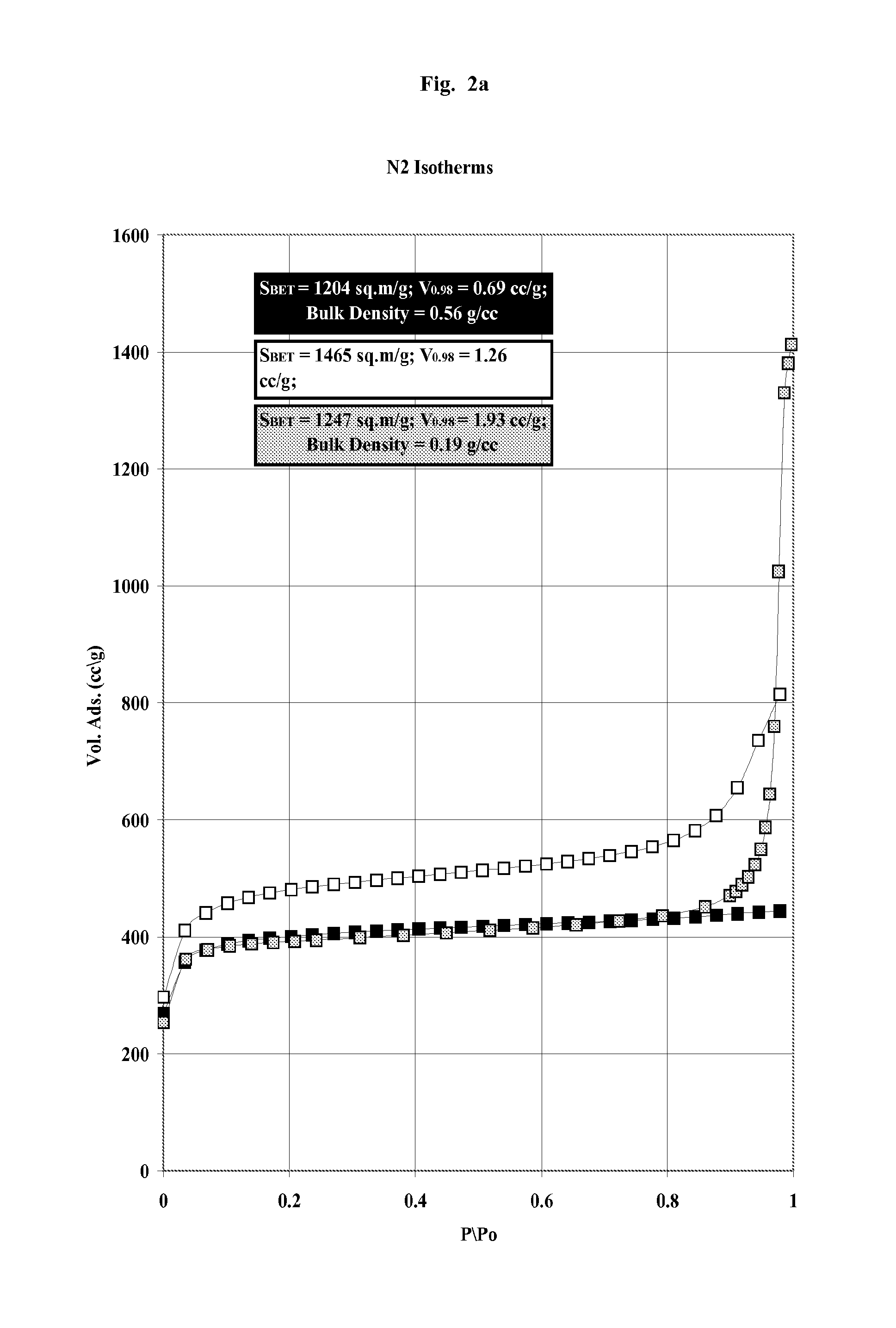Carbon and its use in blood cleansing applications
a technology of carbon and blood cleansing, applied in the field of microporous/mesoporous or microporous/macroporous carbon, can solve the problems of affecting the quality of life of patients, affecting the treatment of plasma, and unable to equate whole blood treatment with whole blood treatment, etc., to improve the quality of life, improve the effect of patient outcome and reduce the number of complications
- Summary
- Abstract
- Description
- Claims
- Application Information
AI Technical Summary
Benefits of technology
Problems solved by technology
Method used
Image
Examples
examples 1-3
Preparation of Beads of Porous Phenolic Resins and Corresponding Carbons
[0070]A solution of 100 parts by weight of industrial Novolac resin with an average molecular weight 700-800 D (Hexion Specialty Chemicals) in ethylene glycol was heated to 90-95° C. and thoroughly mixed for 2-5 minutes with a solution of 15-20 parts by weight of hexamethylenetetramine (hexamine) in ethylene glycol heated to the same temperature. The resulting clear solution was poured in a stream into 2.5-6 fold volume of stirred hot (150-155° C.) low viscosity mineral oil (insulating oil or transformer oil) containing 0.2-1% (v / v) of a dispersing agent which was an industrial drying oil (Danish oil), a major component being polyunsaturated (oxidised) vegetable oils. The temperature of the mixture fell to 135-140° C., and the mixture was reheated to 150-155° C. over a period of 15-20 minutes. Typically curing occurred within 1-2 minutes at around 140° C. followed by substantial evolution of gas, predominantly a...
example 4
Preparation of Carbon Monoliths
[0077]A hot solution of 100 parts by weight of Novolac resin in 100 w.p. of ethylene glycol was thoroughly mixed with a hot solution of 16 parts by weight of hexamine in 190 parts by weight of ethylene glycol. The resulting solution was transferred into a stainless steel tray, covered with a lid and placed into flameproof oven. Raising the temperature to 150° C. and maintaining it for 1-4 hrs ensured formation of a solid cross-linked resin cake from a resin solution. After crushing the cake into ˜1 cm pieces of resin it was either dried in vacuum at 110-130° C. or washed repeatedly with hot (90-95° C.) water to remove ethylene glycol and than dried until water-free, milled and used for the preparation of monoliths.
[0078]In order to prepare monoliths the resin was formed into a stiff dough which was then extruded through a multi-channel die. The dough incorporated several extrusion aids in order to modify its rheological properties and enhance both the ...
example 5
Carbon Bead Removal of Cytokines From Human Plasma and Whole Blood
[0080]An in vitro experiment was performed to test the ability of the carbon beads, with differing pore size distribution and specific surface area (see Table 2), to adsorb inflammatory cytokines from plasma. Carbon beads (0.1 g) of Example 1-3 were weighed into Eppendorf tubes (n=3 for each of 3 incubation time points) and pre-equilibrated with phosphate buffered saline (PBS) for 2 hours in a shaking incubator at 37° C., before they were centrifuged at 8000 rpm for 5 minutes and the supernatant removed. Fresh human plasma (National Blood service) was spiked with the human recombinant inflammatory cytokines (BD Biosciences), TNF (1000 pg / m1), IL-6 (1000 pg / m1) and IL-8 (500 pg / ml). 800 μl of spiked plasma was added to each carbon bead type and incubated on a shaking incubator at 37° C. At timed intervals (30, 60 and 90 minutes) the samples were removed and centrifuged at 8000 rpm and the plasma was removed and frozen ...
PUM
| Property | Measurement | Unit |
|---|---|---|
| size | aaaaa | aaaaa |
| size | aaaaa | aaaaa |
| size | aaaaa | aaaaa |
Abstract
Description
Claims
Application Information
 Login to View More
Login to View More - R&D
- Intellectual Property
- Life Sciences
- Materials
- Tech Scout
- Unparalleled Data Quality
- Higher Quality Content
- 60% Fewer Hallucinations
Browse by: Latest US Patents, China's latest patents, Technical Efficacy Thesaurus, Application Domain, Technology Topic, Popular Technical Reports.
© 2025 PatSnap. All rights reserved.Legal|Privacy policy|Modern Slavery Act Transparency Statement|Sitemap|About US| Contact US: help@patsnap.com



